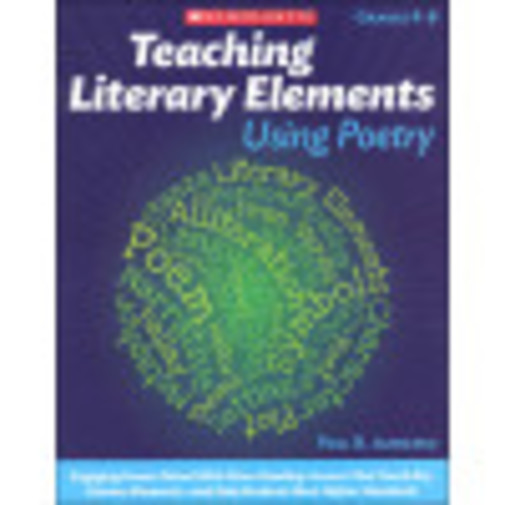We use cookies to make your experience better. To comply with the new e-Privacy directive, we need to ask for your consent to set the cookies. Learn more.
Teaching Literary Elements Using Poetry
Poetry is a perfect avenue for teaching literary elements. They are typically short, allowing you to focus on particular elements without losing sight of the poem as a whole. This book has 12 reproducible lessons, each following the same format. First comes a definition of the literary element and suggestions for introducing it and the poem to your students, a vocabulary box, reading the poem aloud, discussion and activity suggestions, a writing activity and some ideas to extend the lesson. In the back of the book is a glossary of key terms and reproducible activity pages (graphic organizers) to help students understand the literary elements. Terms learned are plot, setting, character, theme, symbolism, metaphor, simile, personification, alliteration, onomatopoeia, mood and poetic patterns. The poems themselves are as varied as the literary elements. Some are quite short, only a couple are longer, but still not more than a page. The subjects have broad appeal and are very well chosen to demonstrate the elements. A ballad called "The Golden Vanity teaches plot and a short one called "Quilt demonstrate symbolism, for example. If you are wanting to add poetry and are not sure how, this book walks you through the process in a very user-friendly presentation. 96pp, pb. ~ Sara
Boost students' reading skills through poetry-based lessons and engaging activities presented by poet and teacher Paul Janeczko. Students will gain a solid understanding of key literary elements, including:
- character
- setting
- theme
- plot
- metaphor
- simile
- and more!
This knowledge will help students readily identify these elements not only in poetry but in all types of literature, allowing them to have a deeper comprehension of what they read. Each lesson includes background information, tips for reading the poem aloud, an opportunity for writing, reproducible activity sheets, and more. By completing the lessons in this book, students will also meet the Common Core State Standards that address literary elements and the genre of poetry.
| Product Format: | Paperback |
|---|---|
| Brand: | Scholastic Professional Book Divisn |
| Grades: | 4-8 |
| ISBN: | 9780545195720 |
| Length in Inches: | 10.875 |
| Width in Inches: | 8.375 |
| Height in Inches: | 0.25 |
| Weight in Pounds: | 0.5 |

